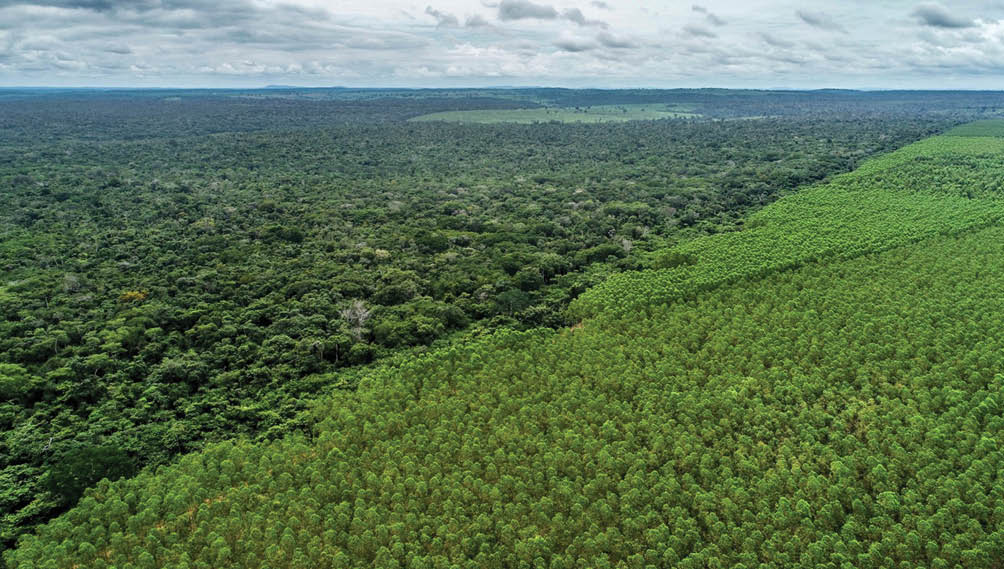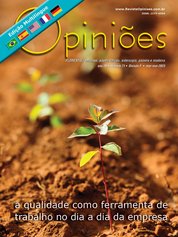Paulo Daniel Mancinelli
Gerente de Excelência Operacional Florestal da Suzano
OpCP71
Qualidade operacional: uma grande preocupação da atividade florestal
A qualidade operacional é uma das principais preocupações em qualquer atividade econômica, incluindo as atividades florestais. A qualidade operacional refere-se à eficiência e à eficácia na execução de tarefas e operações, visando garantir a produção de produtos de qualidade, a segurança dos trabalhadores, a sustentabilidade ambiental e a maximização dos resultados financeiros.
As atividades florestais envolvem diversas operações, como o plantio, a colheita, o transporte, a armazenagem e a transformação da matéria-prima florestal em produtos acabados, como madeira serrada, celulose e papel.
A qualidade operacional em cada uma dessas etapas é fundamental para garantir a sustentabilidade da atividade e a obtenção de produtos de qualidade, e isso não é diferente na celulose da Suzano.
Um dos principais desafios das atividades florestais é garantir a segurança dos trabalhadores, que estão expostos a riscos de acidentes com máquinas, quedas de árvores, incêndios florestais e doenças ocupacionais. A qualidade operacional é um dos principais fatores que contribuem para minimizar esses riscos, por meio da adoção de boas práticas de segurança no trabalho, da utilização de equipamentos de proteção individual e coletiva e da capacitação dos trabalhadores.
Além da segurança, a qualidade operacional também é fundamental para a sustentabilidade ambiental das atividades florestais. A gestão adequada dos recursos naturais, como a água e o solo, a preservação da biodiversidade e a redução dos impactos ambientais são aspectos que dependem da qualidade operacional das atividades florestais. A utilização de técnicas de manejo florestal sustentável, a redução do desperdício de matéria-prima e a minimização dos impactos ambientais da cadeia produtiva são exemplos de práticas que contribuem para a qualidade operacional nesse sentido.
Além dos aspectos sociais e ambientais, a qualidade operacional também é importante para a maximização dos resultados financeiros das atividades florestais. A eficiência na execução das operações florestais, como o plantio, a colheita e o transporte, contribui para a redução dos custos e o aumento da produtividade, o que se reflete em uma maior rentabilidade da atividade. Por fim, a qualidade operacional é um aspecto fundamental para a competitividade das atividades florestais no mercado global.
Os consumidores de produtos florestais estão cada vez mais exigentes em relação à qualidade dos produtos e à sustentabilidade ambiental da cadeia produtiva, e as empresas que não adotam boas práticas de qualidade operacional correm o risco de perder mercado para concorrentes que oferecem produtos de qualidade superior.
Considerados todos esses importantes aspectos, é urgente a evolução e a transformação das nossas medições de qualidade através de uma revolução digital. Na última década, pouco mudou nos processos de medição. Claro, saímos das anotações em papel e usamos celulares e tablets. Saímos de relatórios complexos para checklists on-line. Estamos, hoje, capturando imagens para suportar as avaliações.
Mas é preciso mais. E, para tal, estamos investindo em evoluir as medições com tecnologias já existentes em outros negócios e aplicações. Um bom exemplo é a utilização de reconhecimento de imagens para avaliação da madeira, suas dimensões, existência de cascas e sujidades como a areia. Computadores já são capazes de reconhecer pessoas, rostos, digitais. E nosso desafio é acelerar sua adoção em nossas medições.
Recentemente, tivemos avanços na utilização de câmeras comuns para detecção de cascas soltas, mas, em nossa estratégia, temos a evolução com câmeras multiespectrais, que são dispositivos capazes de capturar imagens em várias faixas espectrais ou comprimentos de onda, incluindo visível, infravermelho próximo e termal, o que permite que essas câmeras forneçam informações adicionais que não são visíveis a olho nu.
Outro ponto importante de avanço e pesquisa é a garantia da qualidade durante a execução das operações. Precisamos fazer evoluir nosso setor para que tenhamos feedback em tempo real para nossas equipes sobre a qualidade do que estão executando. Nesse sentido, são foco de nosso trabalho a utilização de câmeras e alarmes embarcados nos equipamentos com tal objetivo. Não há motivos para que os próprios harvesters possam monitorar comprimentos de tora e efetividade do descascamento, para ficarmos em exemplos simples e de possível implementação. Em casos como esse, a robustez de tais equipamentos são chave.
Essas medições on-line abrem novas perspectivas de gestão: elas permitem autocorreção de desvios antes que se perpetuem, mostram aos nossos colaboradores como estão importantes componentes de sua nota de qualidade durante o mês e os incentivam a monitorar e a competir, não só em termos de produtividade mas também de qualidade.
Em resumo, a qualidade operacional é um fator crítico para o sucesso das atividades florestais, contribuindo para a segurança dos trabalhadores, a sustentabilidade ambiental, a maximização dos resultados financeiros e a competitividade no mercado global. As empresas florestais devem investir em boas práticas de qualidade operacional, como a capacitação dos trabalhadores, a utilização de tecnologias de ponta e a adoção de técnicas de manejo sustentável, a fim de garantir a perenidade da atividade e a obtenção de certificações.





